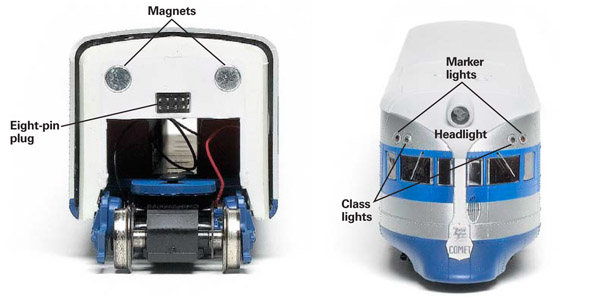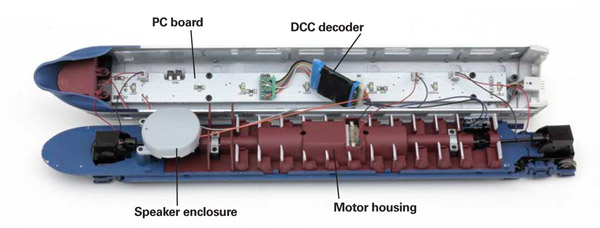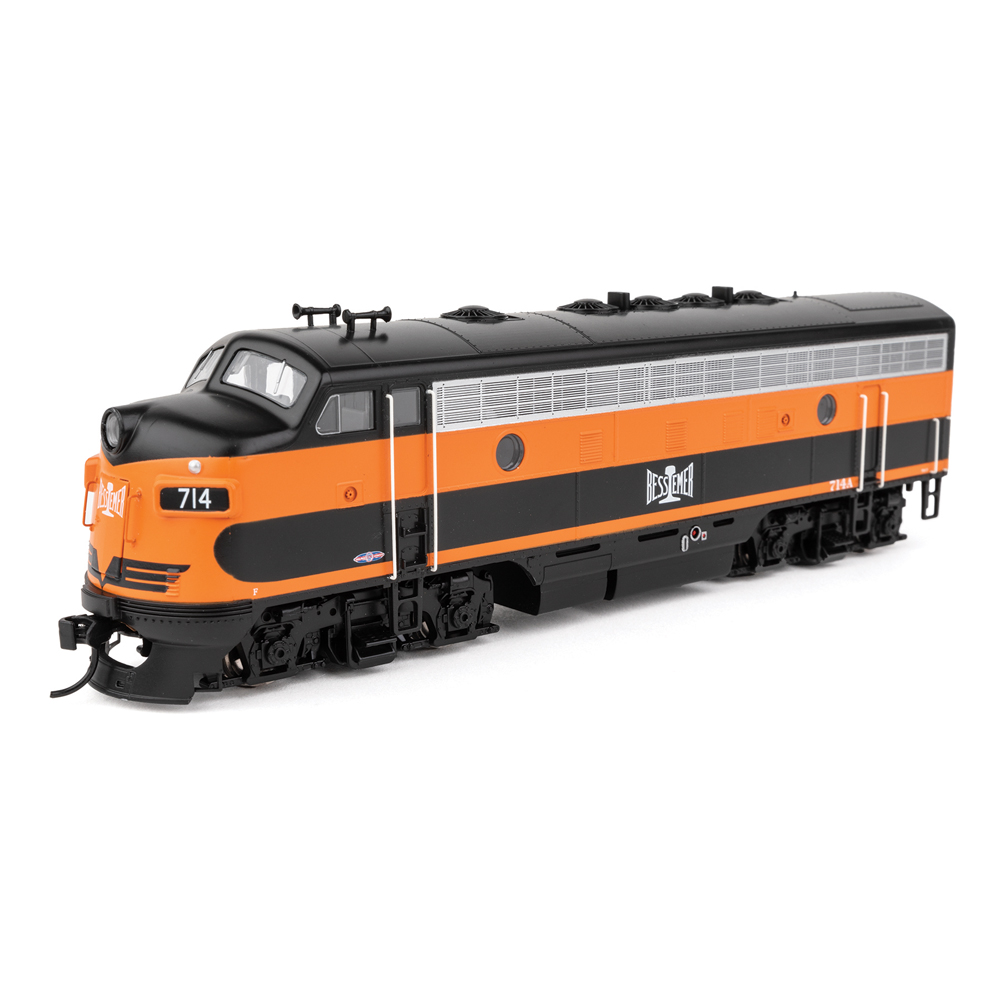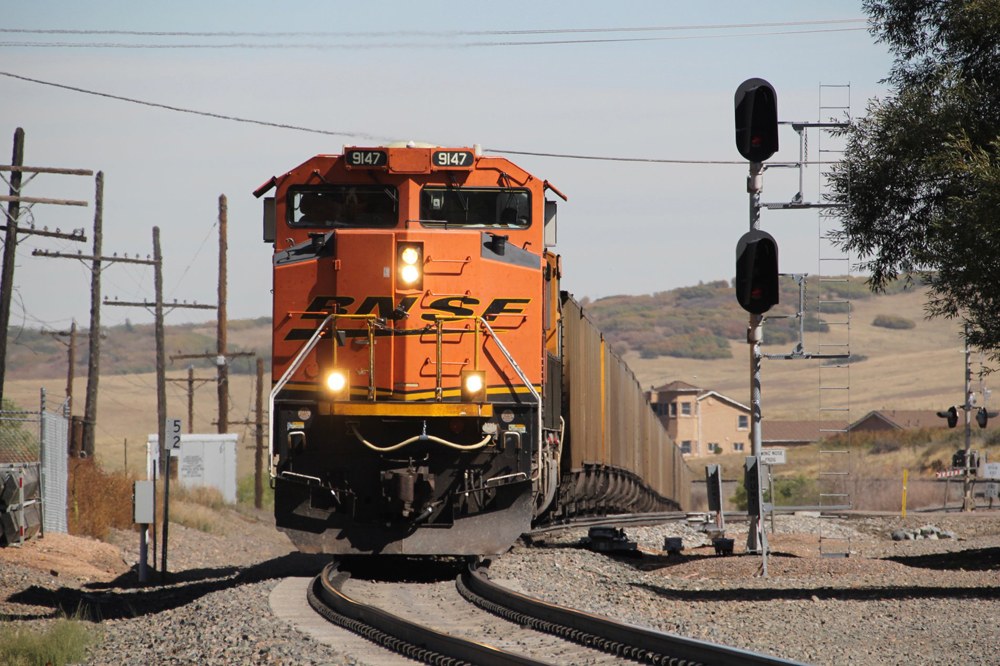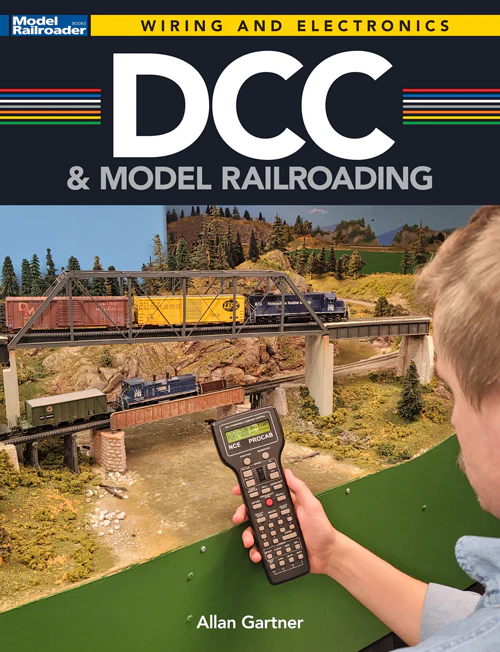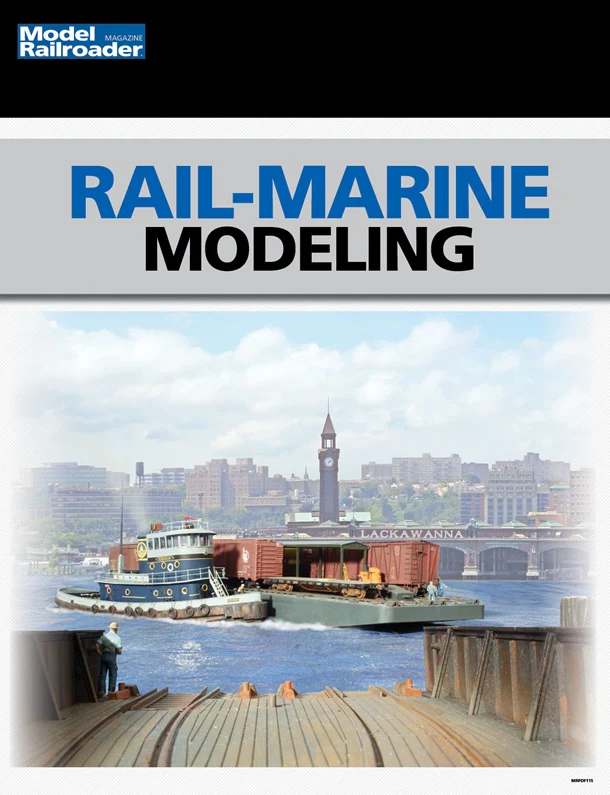The prototype. The Goodyear Zeppelin Co. delivered the three-car Comet to the New York, New Haven & Hartford RR in 1935. The builder’s number was GRZ-1 (Goodyear Rail Zeppelin 1); the Comet was the only train ever built by an airship company.
The articulated train was bidirectional, featuring a 64-seat coach with a 48-seat cab coach on each end. Each cab coach had a 400-hp Westinghouse diesel engine and crew controls. The train crew controlled both engines simultaneously from one cab. When it was time for the return trip, the crew walked along the train to the opposite cab.
During one test run the Comet broke a New England speed record when it attained 110.5 mph. New Haven advertisements boasted that the train could make its 44-mile non-stop run between Boston, Mass., and Providence, R.I., in just 44 minutes.
By the 1940s, conventional trains with higher seating capacity bumped the Comet off non-stop routes and onto local and branchline service. The train made its last trip in 1951 and was scrapped the following year.
All the cars are made primarily of plastic and have sharply defined molded detail. The windshield wipers are scale size separate parts.
Most of the detail on the truck sideframes matches prototype photos. However, the tops of the journals were omitted to allow the trucks to swing around tight model railroad curves. The missing details aren’t noticeable when the train is on the rails.
The paint scheme matches prototype photos from 1935 to 1941. The blue stripes feature sharp color separation. All lettering is clearly printed and prototypically placed.
The unpainted aluminum sides of the prototype were machined to have a “whorled” effect. In HO scale, this effect would be almost invisible. The model’s metallic silver paint is a credible HO scale depiction of the prototype’s aluminum sides.
The plastic body shells are press-fit and easy to remove, which is useful for adding passenger and crew figures. In each car, the interior floor and walls are molded as one piece. The seats and floor are painted reddish brown, and the seat headrests are painted white.
The powered cab coach features a die-cast metal frame with a dual flywheel equipped motor mounted in the center. (The non-powered cars have plastic frames.) Two universal shafts transfer power from the motor via worm gears to spur gear boxes attached to the front and rear trucks.
The car’s plastic interior fits over the mechanism. The seats along the windows do a good job concealing the mechanism’s housing. In our DCC sound-equipped version, the 28mm round downward-facing speaker is concealed under the cab interior.
For illumination, all the cars have printed-circuit (PC) boards with overhead light-emitting diodes (LEDs)
attached to the ceilings. The PC board in the powered end car also has an eight-pin DCC socket.
Eight-pin plugs and sockets on the car ends electrically connect each car’s PC board to the rest of the train. Two magnets in each diaphragm make the cars easy to connect and hold them tightly together. It’s important for the cars to be connected securely or the lighting effects won’t function.
The headlights and red marker lights operate according to direction. The white classification (class) lights are constantly illuminated on both ends. However, on the prototype, only the markers on the rear end of the train should be illuminated.
According to the Shoreliner article, the prototype Comet also had a warning beacon mounted on each cab roof that projected a vertical beam when the train ran at night. This feature isn’t included on the model.
Performance. I recommend the Digitrax decoder equipped version for DCC use only. I tested the model on our direct-current (DC) test track with three different power packs, but the train didn’t reliably respond to speed or direction controls.
I ran the model on our DCC test track using a NCE Corp. Powercab. With the decoder set to 28 speed steps, the model started moving in speed step 3 at 5 scale mph. The model didn’t reach the prototype’s record-breaking 110.5 mph top speed. However, the model’s top speed of 73 scale mph is quite fast for most model railroads.
To improve the train’s slow speed performance I set the value of the decoder’s starting voltage configuration variable (CV2) to 22. The Comet then ran in speed step 1 at 4 scale mph with the decoder set for 28 speed steps. To achieve this performance with the decoder set for 128 speed steps, I set CV2 to 14.
The all-wheel electrical pickup ensured that the train’s interior and exterior lighting remained constant even as I slowly ran it through a yard ladder. The train also ran smoothly on a stretch of our layout that includes a crossing and a 30″ radius curve.
DCC sound. When I set the Comet on the track it rumbled to life with the convincing sound of a single diesel engine. On the prototype there would be the sound of two diesel engines, one on each end. I set the engine sounds for manual notching, which allowed me to increase the rpm sound regardless of the model’s speed using functions 6 and 7 on my DCC throttle. I find this feature useful since I can realistically increase engine rpm before the train starts moving.
Other user-triggered effects include the bell and squealing brake sounds. The model’s airhorn sounds like a Leslie Tyfon, which was used on the prototype, according to the Shoreliner article.
During the tests with the NCE Powercab, the Comet would slow down whenever I pressed the horn button or CV2. I eliminated this problem by setting CV57 to a value of 0, which disabled the decoder’s back electro-motive force (BEMF). When I decreased the NCE throttle to speed step 0, the decoder would shut down. I was unable to eliminate this problem when using the NCE system.
However, when I ran the Comet with the MRC Prodigy Advance system and the CVP EasyDCC system on two of our other layouts, the decoder worked smoothly and didn’t have any of the issues noted above.
Although I found the Digitrax decoder a bit quirky, the Con-Cor Comet with or without DCC installed is an accurate model of a unique prototype.
Price: $459.98 (three-car set), $149.98 (add-on coach), Digitrax Digital Command Control (DCC) sound decoder with speaker available separately or installed for an additional $74.98
Manufacturer
Con-Cor International
8101 E. Research Ct.
Tucson, AZ 85710-6758
con-cor.com
Era: 1935 to 1941 as decorated
Features
- 16-wheel electrical pickup
- Dual-flywheel equipped motor and eight-wheel drive
- Eight-pin DCC socket on printed-circuit board
- Interior and exterior lighting
- Metal RP-25 contour wheels in gauge
- Minimum radius: 22″
- Weight: 10.5 ounces (powered cab coach), 4.25 ounces (coach), 6 ounces (unpowered cab coach)






